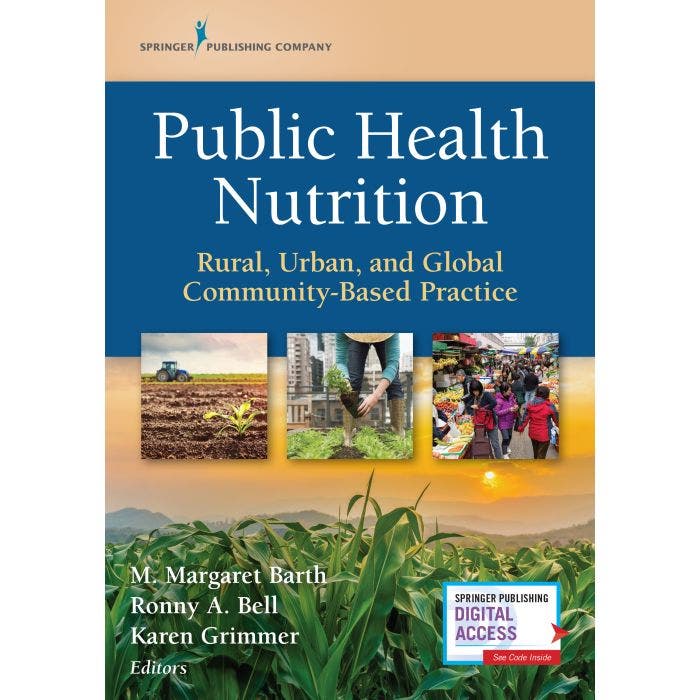Preventable Health Differences, or health disparities, are health outcomes and quality of life differences that are disproportionate among groups of people based on their social and environmental exposures. These differences may include access to basic healthcare and screenings, the prevalence and severity of diseases, or health complications and mortality.
Some places to get started understanding health disparities include MedLine Plus summary on Health Disparities and the CDC overview of Health Equity.
 Public health nutrition: Rural, urban, and global community-based practice
Public Health Nutrition is a comprehensive, practice-based textbook for graduate and upper undergraduate students and community nutrition and public health professionals. It provides readers with the principal understanding of how improving access to healthy foods at individual, local, regional and global levels as well as improving food security and sustainability can improve community health and combat noncommunicable diseases, infectious diseases, hunger and malnutrition, obesity, social injustice, and debilitating food environments. Across diverse communities, this book not only directs readers' attention towards key public health nutrition-related challenges that affect rural and urban populations across the globe, it also adds critical thinking exercises, cases, and engaging discussion topics to advance application of evidence-based practice in the real world. Using an interprofessional approach and supported with evidence-based research in public health, nutritional science, and behavioral economics, this textbook covers how to plan health promotion programs and interventions in diverse communities, how to analyze and influence food policy, sustainability, and security initiatives, and how to address cultural competency, nutritional monitoring, professional development, and many other practice-based skills out in the field.. All chapters are complete with learning objectives, detailed case studies, discussion questions, learning activities for beyond the classroom, and a review of core topics covered. Essential for public health students studying nutrition, public policy, social work, and other health science-related areas, the book presents a strategic context to real-world initiatives while employing an interprofessional outlook to tackle public health nutrition issues.--
Public health nutrition: Rural, urban, and global community-based practice
Public Health Nutrition is a comprehensive, practice-based textbook for graduate and upper undergraduate students and community nutrition and public health professionals. It provides readers with the principal understanding of how improving access to healthy foods at individual, local, regional and global levels as well as improving food security and sustainability can improve community health and combat noncommunicable diseases, infectious diseases, hunger and malnutrition, obesity, social injustice, and debilitating food environments. Across diverse communities, this book not only directs readers' attention towards key public health nutrition-related challenges that affect rural and urban populations across the globe, it also adds critical thinking exercises, cases, and engaging discussion topics to advance application of evidence-based practice in the real world. Using an interprofessional approach and supported with evidence-based research in public health, nutritional science, and behavioral economics, this textbook covers how to plan health promotion programs and interventions in diverse communities, how to analyze and influence food policy, sustainability, and security initiatives, and how to address cultural competency, nutritional monitoring, professional development, and many other practice-based skills out in the field.. All chapters are complete with learning objectives, detailed case studies, discussion questions, learning activities for beyond the classroom, and a review of core topics covered. Essential for public health students studying nutrition, public policy, social work, and other health science-related areas, the book presents a strategic context to real-world initiatives while employing an interprofessional outlook to tackle public health nutrition issues.--